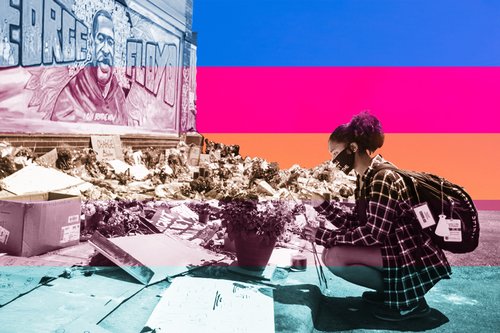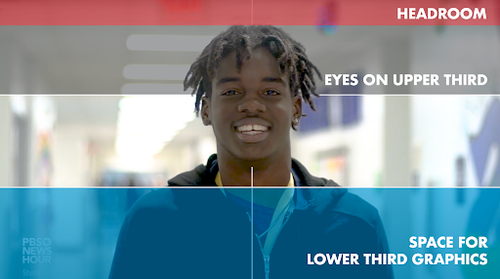
During the summer of 2020, people took to the streets outraged by the death of George Floyd at the hands of police. Scenes of compassion and solidarity, mixed with fury and chaos, are still present on social media.
For this media making challenge, students will record video diaries with phones and/or interview others in-person or remotely (see instructions for recording remote interviews). Go HERE to guide students through the production process.
If you plan on having a classroom discussion before assigning this challenge, use this Classroom Conversations Guide to help students feel prepared and supported.
Students recognize the responsibilities and opportunities for positively contributing to their digital communities. (ISTE)
Students leverage technology to take an active role in choosing, achieving and demonstrating competency in their learning goals, informed by the learning sciences. (ISTE)
Students communicate clearly and express themselves creatively for a variety of purposes using the platforms, tools, styles, formats and digital media appropriate to their goals. (ISTE)
Journalism
Representation
Stereotypes and Misconceptions
Race and Justice
Projects
Beginner
Intermediate
50 Minutes
Put pen to paper and write down what you are seeing, hearing and thinking about race and justice. Use this to get your thoughts together and think about your friends and family members, too.
Use these questions as guides:
Tell us what you’re seeing.
Tell us what you’re talking about.
Talk to us about race and law enforcement.
Tell us what you’re seeing in the media.
Talk to us about the role of journalism.
Selfie-style with your phone or straight to camera (shoot horizontally if possible, but vertical is OK):
**Remember, a good story has a beginning, middle, and end. Before you begin, think about what you want to say to your audience. This is a straight to camera recording that can be up to two minutes. **
ON CAMERA IDENTIFICATION: Interviewers should ask subjects the following - For the record, please say and spell your full name (first and last) on camera. Also please describe how you want to be identified in this video. For example, “I’m an 11th grade student at Canyon High School in Santa Clarita, California”

Looking at the camera, centered, from the chest up, eyes on upper third, normal headroom.
USE/DOWNLOAD: SRL RAPID RESPONSES SKILLS AND STANDARDS CHECKLIST
This challenge does not have an active deadline to submit to PBS NewsHour Student Reporting Labs. However, students are encouraged to publish their stories on their school/club/program website or through video/social platforms such as YouTube, Instagram or Twitter and tag Student Reporting Labs. Check with your teacher to find out instructions for class submissions.
FACEBOOK: /STUDENTREPORTINGLABS